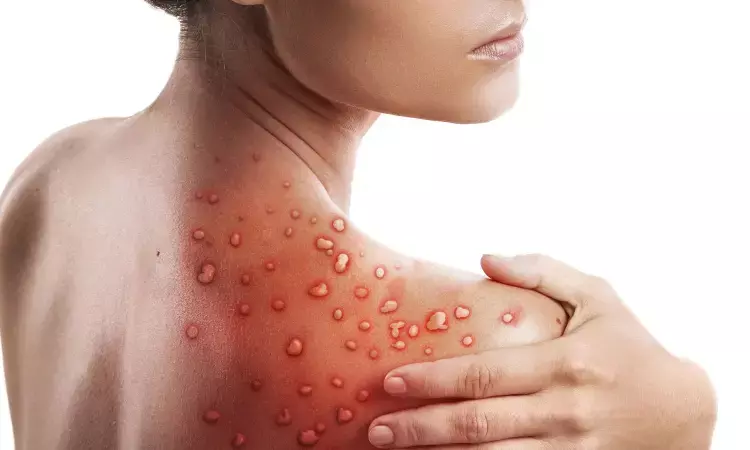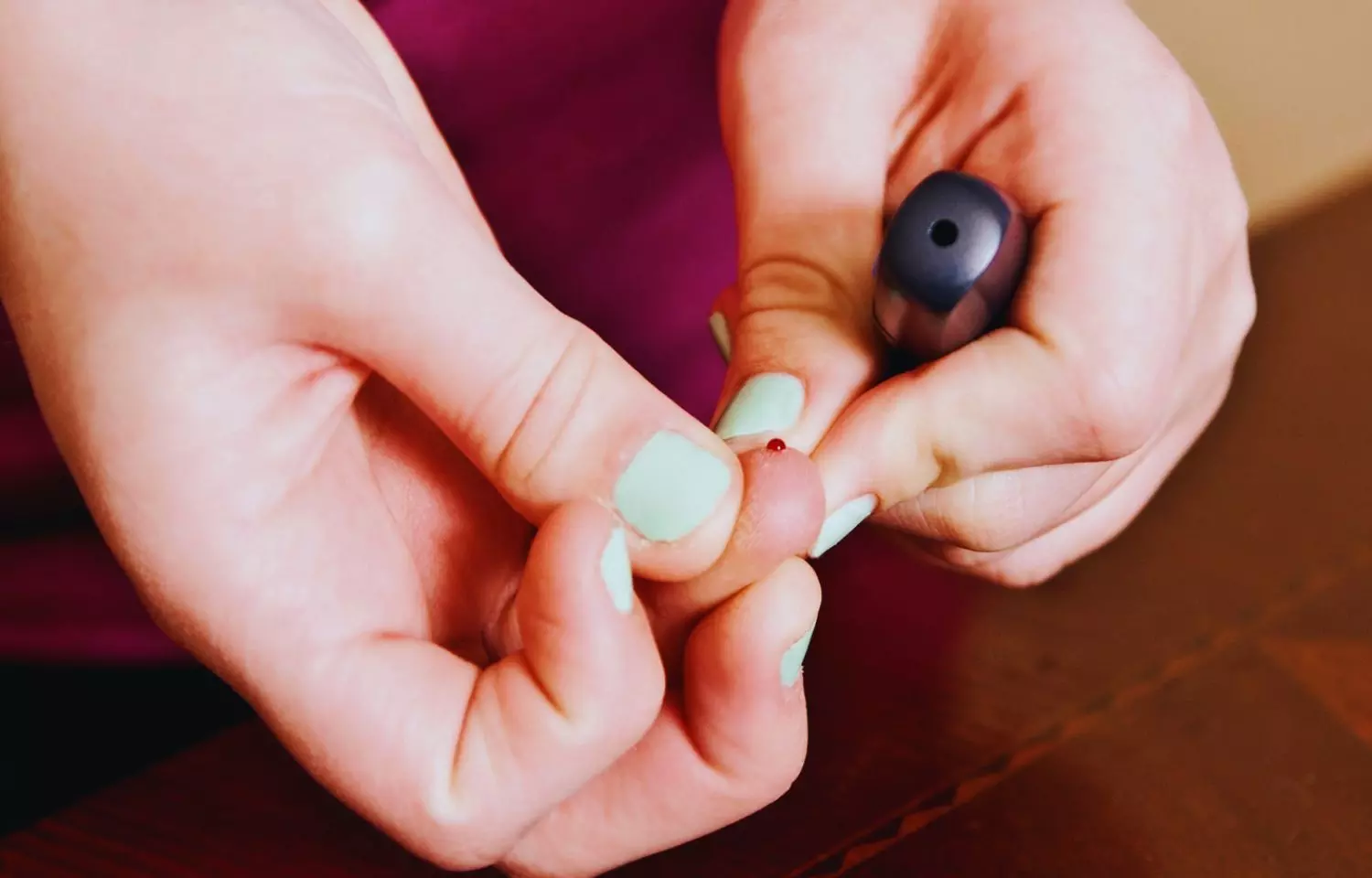- Home
- Medical news & Guidelines
- Anesthesiology
- Cardiology and CTVS
- Critical Care
- Dentistry
- Dermatology
- Diabetes and Endocrinology
- ENT
- Gastroenterology
- Medicine
- Nephrology
- Neurology
- Obstretics-Gynaecology
- Oncology
- Ophthalmology
- Orthopaedics
- Pediatrics-Neonatology
- Psychiatry
- Pulmonology
- Radiology
- Surgery
- Urology
- Laboratory Medicine
- Diet
- Nursing
- Paramedical
- Physiotherapy
- Health news
- Fact Check
- Bone Health Fact Check
- Brain Health Fact Check
- Cancer Related Fact Check
- Child Care Fact Check
- Dental and oral health fact check
- Diabetes and metabolic health fact check
- Diet and Nutrition Fact Check
- Eye and ENT Care Fact Check
- Fitness fact check
- Gut health fact check
- Heart health fact check
- Kidney health fact check
- Medical education fact check
- Men's health fact check
- Respiratory fact check
- Skin and hair care fact check
- Vaccine and Immunization fact check
- Women's health fact check
- AYUSH
- State News
- Andaman and Nicobar Islands
- Andhra Pradesh
- Arunachal Pradesh
- Assam
- Bihar
- Chandigarh
- Chattisgarh
- Dadra and Nagar Haveli
- Daman and Diu
- Delhi
- Goa
- Gujarat
- Haryana
- Himachal Pradesh
- Jammu & Kashmir
- Jharkhand
- Karnataka
- Kerala
- Ladakh
- Lakshadweep
- Madhya Pradesh
- Maharashtra
- Manipur
- Meghalaya
- Mizoram
- Nagaland
- Odisha
- Puducherry
- Punjab
- Rajasthan
- Sikkim
- Tamil Nadu
- Telangana
- Tripura
- Uttar Pradesh
- Uttrakhand
- West Bengal
- Medical Education
- Industry
Is acute Myocarditis new manifestation of Monkeypox? -A new case report

A recent case report published in the Journal of the American College of Cardiology reported that acute Myocarditis developed in a patient with Confirmed Monkey Pox virus infection. In the instant case a 31-year-old male with confirmed monkeypox infection developed acute myocarditis approximately one week following the onset of monkeypox symptoms.
The patient presented to a health clinic five days following the onset of monkeypox symptoms, including malaise, myalgia, fever and multiple swollen lesions on the face, hands and genitalia. Positive monkeypox infection was confirmed with a PCR swab sample of a skin lesion. The patient returned to the emergency department three days later reporting chest tightness radiating through the left arm.
The patient was admitted to an intensive care unit following initial routine examination with the clinical suspicion of acute myocarditis. The initial ECG showed sinus rhythm with nonspecific ventricular repolarization abnormalities and routine laboratory tests revealed elevated levels of C-reactive protein, creatine phosphokinase (CPK), high-sensitivity troponin I and brain natriuretic peptide (BNP), all of which can indicate stress injury to the heart. The results of the cardiac magnetic resonance (CMR) study performed on the patient were consistent with myocardial inflammation and a diagnosis of acute myocarditis.
After the novel, the SARS-COVID-19 infection world is facing another viral infection - The Monkeypox infection. Monkeypox infection is a viral zoonotic infection similar to smallpox. It is caused by a double-stranded DNA virus belonging to the Orthopoxvirus genus of the Poxviridae family. The central African (Congo Basin) clade and the west African clade are the two different genetic clades of this virus. Rope squirrels, tree squirrels, Gambian pouched rats, dormice, non-human primates, and other species are the natural host of this virus. Zoonotic transmission from direct contact with the blood, bodily fluids, or cutaneous or mucosal lesions of infected animals and Human-to-human transmission from close contact with respiratory secretions, skin lesions of an infected person, or recently contaminated objects is the main mode of infection spread.
The incubation period of this infection is 6 to 13 days but can range from 5 to 21 days. Infection occurs in two phases which are the invasion period and the skin eruptions period. The invasion period lasts for 0–5 days and is similar to any other viral infection characterized by fever, intense headache, lymphadenopathy, back pain, myalgia, and intense asthenia. The distinctive feature of monkeypox infection which distinguishes it from other viral infections is Lymphadenopathy. This period is followed by the skin eruption which usually begins 1–3 days after the fever and is generally seen on the face and extremities like the palms of the hands and soles of the feet. Oral mucous membranes, genitalia, conjunctivae, and cornea are the other areas that can have skin eruptions. The evolution of the rash is from macules to papules, vesicles, pustules, and crusts which dry up and fall off and their number varies from a few to several.
Recently researchers from Portugal reported a case of Monkeypox viral infection in a 31-year-old male patient who subsequently developed acute myocarditis. The myocarditis developed days after the eruption of skin lesions, and it was confirmed by a Cardiac magnetic resonance study. Supportive care was given to the patient as the management. Though the patient recovered completely clinically, this case highlighted the importance of cardiac involvement as a potential complication associated with Monkeypox.
For the full article, click here: 10.1016/j.jaccas.2022.08.033
1. Pinho A, Braga M, Vasconcelos M, et al. Acute Myocarditis – a new manifestation of Monkeypox infection?. J Am Coll Cardiol Case Rep. null2022, 0 (0).
2. World Health Organization: WHO. Monkeypox. Who.int. Published May 19, 2022. https://www.who.int/news-room/fact-sheets/detail/monkeypox
BDS, MDS
Dr.Niharika Harsha B (BDS,MDS) completed her BDS from Govt Dental College, Hyderabad and MDS from Dr.NTR University of health sciences(Now Kaloji Rao University). She has 4 years of private dental practice and worked for 2 years as Consultant Oral Radiologist at a Dental Imaging Centre in Hyderabad. She worked as Research Assistant and scientific writer in the development of Oral Anti cancer screening device with her seniors. She has a deep intriguing wish in writing highly engaging, captivating and informative medical content for a wider audience. She can be contacted at editorial@medicaldialogues.in.
Dr Kamal Kant Kohli-MBBS, DTCD- a chest specialist with more than 30 years of practice and a flair for writing clinical articles, Dr Kamal Kant Kohli joined Medical Dialogues as a Chief Editor of Medical News. Besides writing articles, as an editor, he proofreads and verifies all the medical content published on Medical Dialogues including those coming from journals, studies,medical conferences,guidelines etc. Email: drkohli@medicaldialogues.in. Contact no. 011-43720751




